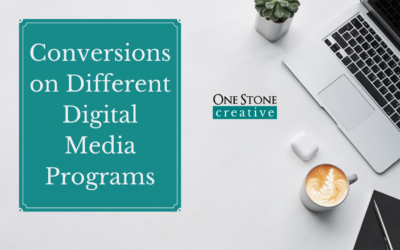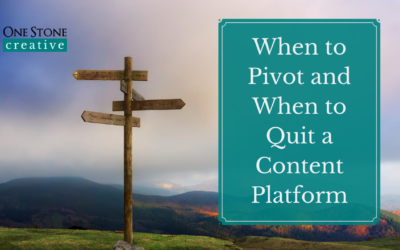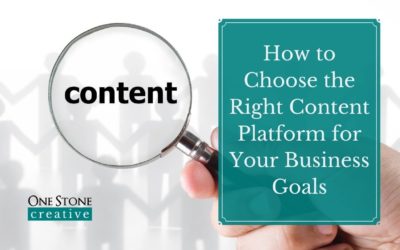A blog is good.
A YouTube Channel is good.
A regular livestream is good.
So are podcasts, books, courses, and all the rest.
But you know what’s AMAZING?
Making them all work together to help strangers become aware of, then like, and then buy from you. When this happens, we call it a content path.
A content path is the different pieces of content you have created that your audience will view in a specific order based on the calls to action from one piece to another that you include.
Every piece of content you create technically *could* be part of a content path – but a lot probably won’t be – and that’s completely fine!
You’ll design and deploy content paths for specific purposes: maybe to direct your audience to actions that are a bigger investment for them than usual, or to get high-value, segmented opt-ins, to make sales and offers, or to encourage people to join you on sales or discovery calls.
Here’s an example of how that might look. Let’s say you have a new book that you want to sell to your audience – but they’re not really in the habit of purchasing small dollar value products from you. You know you’ll get some sales by emailing your list – but you’d like many more sales than you’ll get from that alone.
Your content path for selling your book (which can be scheduled specifically, or evergreen!) might be an email leading to a blog post that has more information, which links to a series of case study YouTube videos, which drive registration to a livestream where you’re answering Q and A’s about the topic of your book – and where you announce a special incentive to buy it!
Another example might be a blog post about a major problem your legal practice clients experience. It highlights a mistake you see people making that costs them BIG in court – the blog post will really address the negative outcomes of making that mistake, and it leads to a video on another part of your site that demonstrates in clear detail how to avoid making that mistake. That video and the page it’s on leads to an opt-in for a short email course that will share in more detail how to fix the problem if you happen to be in it – something that you know a lot of your clients were experiencing when they first hired you.
This content path identifies people who are most like your existing clients and allows you to target them for specific offers and opportunities that can help them solve their problems.
They are really flexible tools to help you segment your audience, increase your conversions, and increase your sales.
Not every content path will be across different digital media platforms – if your audiences on different platforms are really siloed (totally different people commenting on your YouTube videos than listening to your podcast, for example) then you should give them the content path in the format they most like from you. It’s less about what format the content is, and more about designing each piece of media to build on the previous one so that learning happens. It can be that your audience is learning about you and your topic, and it can be you learning about your audience, and their needs and interests.
Curating the experience your audience has with content paths helps you reach your conversion goals. Click To Tweet
As you’re planning content for the coming month or quarter, think about whether or not any of what you will be creating can also fit into a content path. If you start developing them now, then by this time next year, you’ll have a huge variety of ways for people to direct themselves to exactly where they need to be in your business.
Let’s quickly go over some of the more common goals for content paths, and how you can start using them!
Audience Growth Content Paths
An Audience Growth Content Path is when you’re designing a series of content that is going to be very sharable, encourages direct engagement and promotion from people who are on it, and provides multiple opportunities for your existing audience to play a role in growing your reach. This could be short videos that answer critical questions leading to blog posts with more information that lead to opt-ins with full-blown ebooks or courses. Generally, audience growth content paths aren’t about making sales – they’re about gaining subscribers.
Audience Segmentation Content Paths
An audience segmentation content path is more for an audience that you already have – but don’t know enough about. You’ll make content paths – videos, blog posts, ebooks and livestreams that your audience can put their hand up to say ‘yes I want this’ or ‘no I don’t’ in a way that you can *track.* This will often start from email, and almost always include different opt-ins that will segment people on your email list. A software like Convert kit makes this very easy!
Product Launch Content Paths
Product Launch content paths are usually the biggest, the most complex and potentially, the highest value. This is the kind of content path you’ll develop when you’re doing a big digital product launch. You want to maximize engagement with videos, blog posts, emails, and if possible, livestreams to give your audience all the information they need about the product to determine if it’s a good fit for them. You might also be working with partners to help direct more people to the different content elements in this path – and you’ll need to track who comes from where. These are big, meaty projects, and most companies that do them, do so only a few times a year.
New Platform Content Paths
If you are launching a new content platform, or you want a steady way to direct followers on your current platform to a new one, then New Platform Content paths are for you. These are paths that ease people into a medium they either don’t already use frequently or that they don’t connect with YOU on already. These paths are typically pretty short, with the sole aim of getting followers from one type of content, into a new one, for example, if you’re shuttering your blog to focus on Youtube – you’ll put a content path from your podcast pages directing people to your YouTube channel, and make sure that it’s easy to find your video channel.
Teaching and Education Content Paths
Finally, let’s talk about Teaching and Education Content Paths. These are one of my favorites. The goal of this kind of path is to use your different digital content platforms to thoroughly teach someone something. Often this will be through a course that’s behind an opt-in or paywall, but it can also be to educate your audience for free, so that they come to a point where they’re ready to hire you. You’ll want to start with the content platform that makes the most sense for the type of content you’re teaching, but you can really experiment with different ways to present information IN the content path to ensure maximum knowledge transfer.
For any of the types of content paths, once it’s established, you can start directing traffic towards them, and seeing how well each step of your path is working – and we’ll be talking more about THAT in another episode.
Before we sign off – one final word of warning when looking at multi-media content paths.
There is always going to be a certain amount of friction (otherwise known as people getting bored and dropping off) when you’re moving from one platform to another – even more than the usual friction when you ask someone to click a link to another content piece in the same medium. Make sure that when you DO switch mediums, it’s because the new piece of content you’re directing people to is the BEST way to deliver that particular message. If you’re not sure, then you know who to call.
Ghostbusters.
Just kidding. It’s Megan. Get on her calendar.
About the Author

Megan Dougherty is the Co-Founder of One Stone Creative. She has been a digital marketer for over a decade, with a strong focus on digital course creation, content marketing and multi-media content production. As the co-founder, she takes pride in high-quality, on-time work and helping people get their messages to the people who need to hear them. She likes spreadsheets, deadlines and creating online experiences that are good for both the creators and the end-users. She hates jumping out of airplanes, mushrooms, and hyberbolic language in messaging. When not helping to produce podcasts courses and videos, she bakes pies and watches Star Trek. (Janeway forever.)



